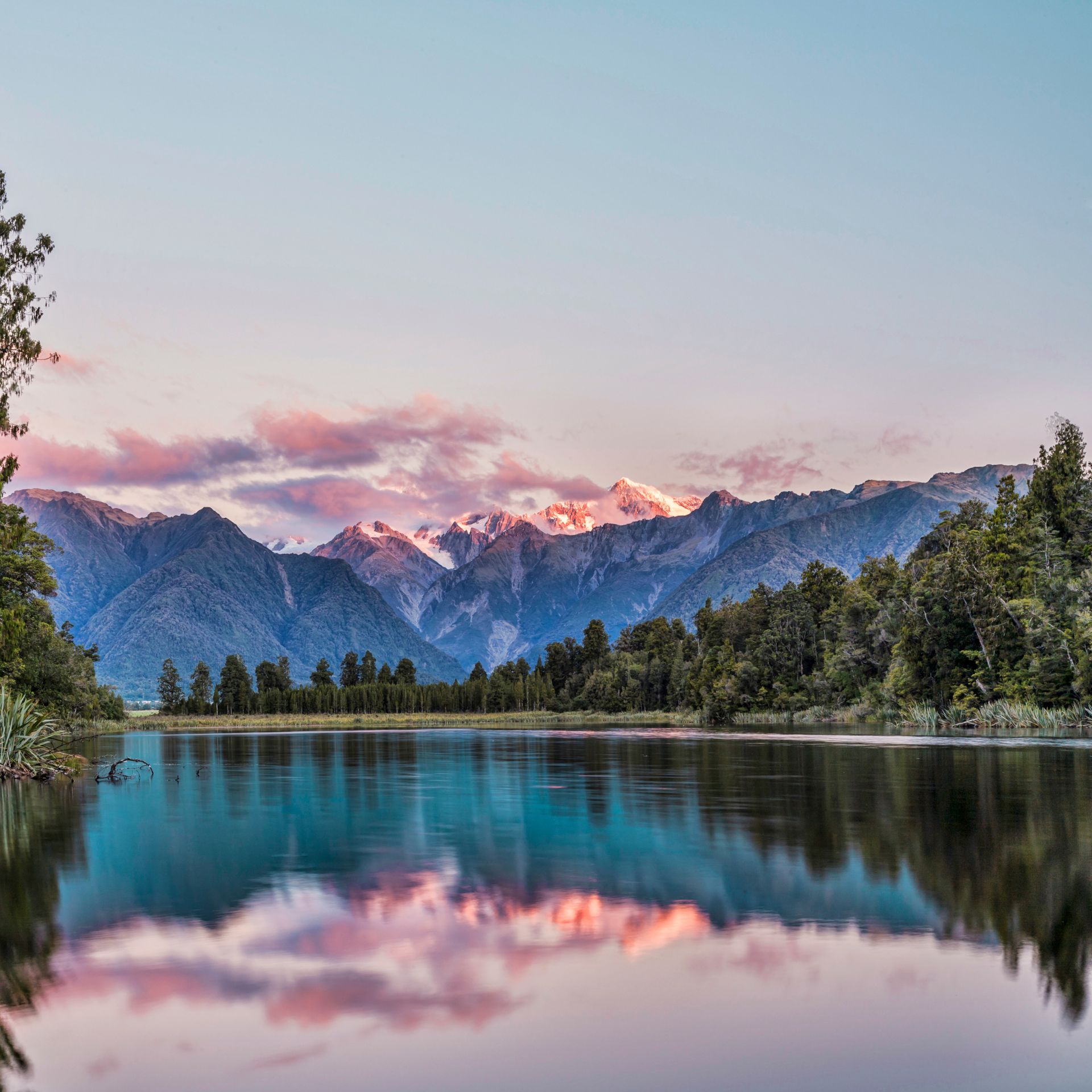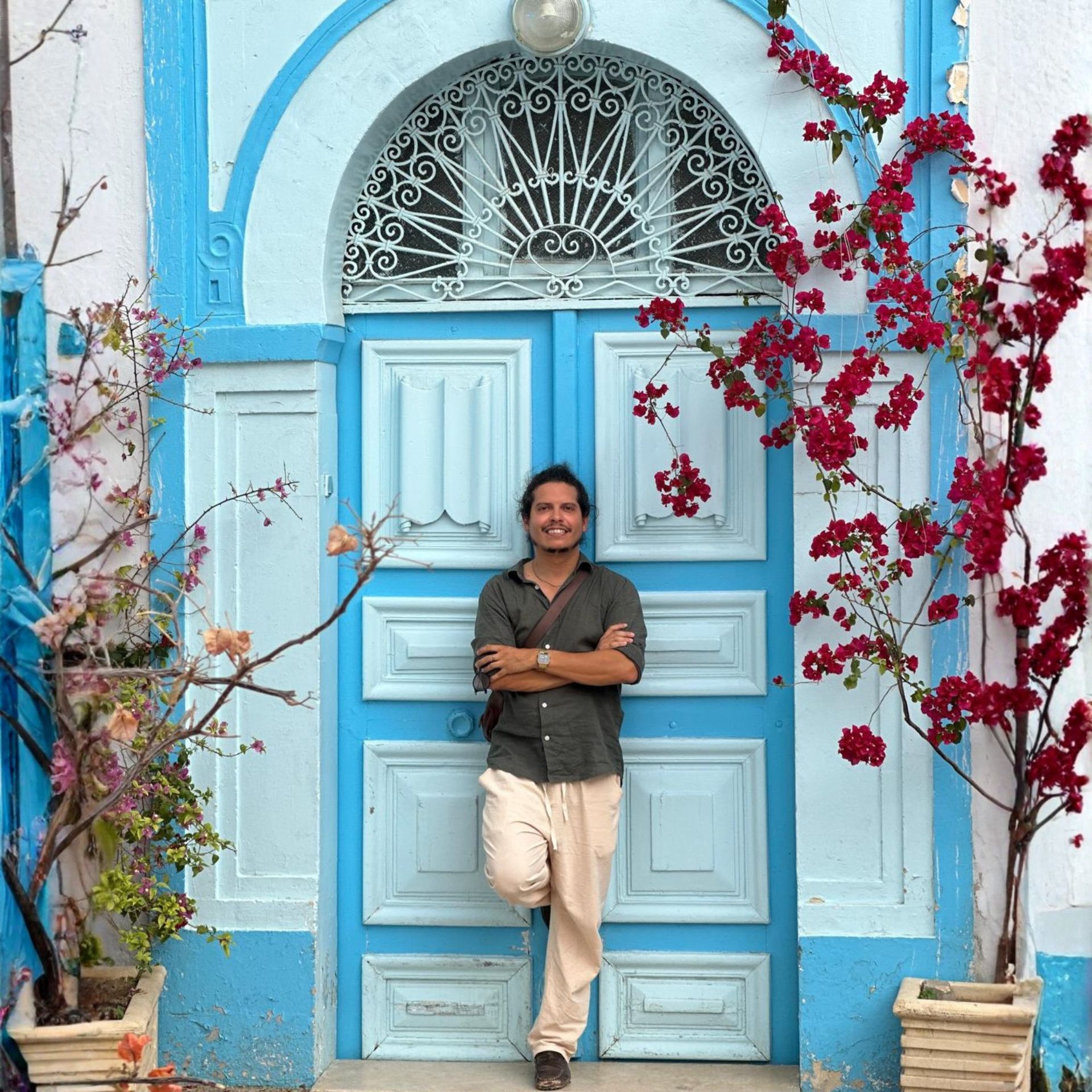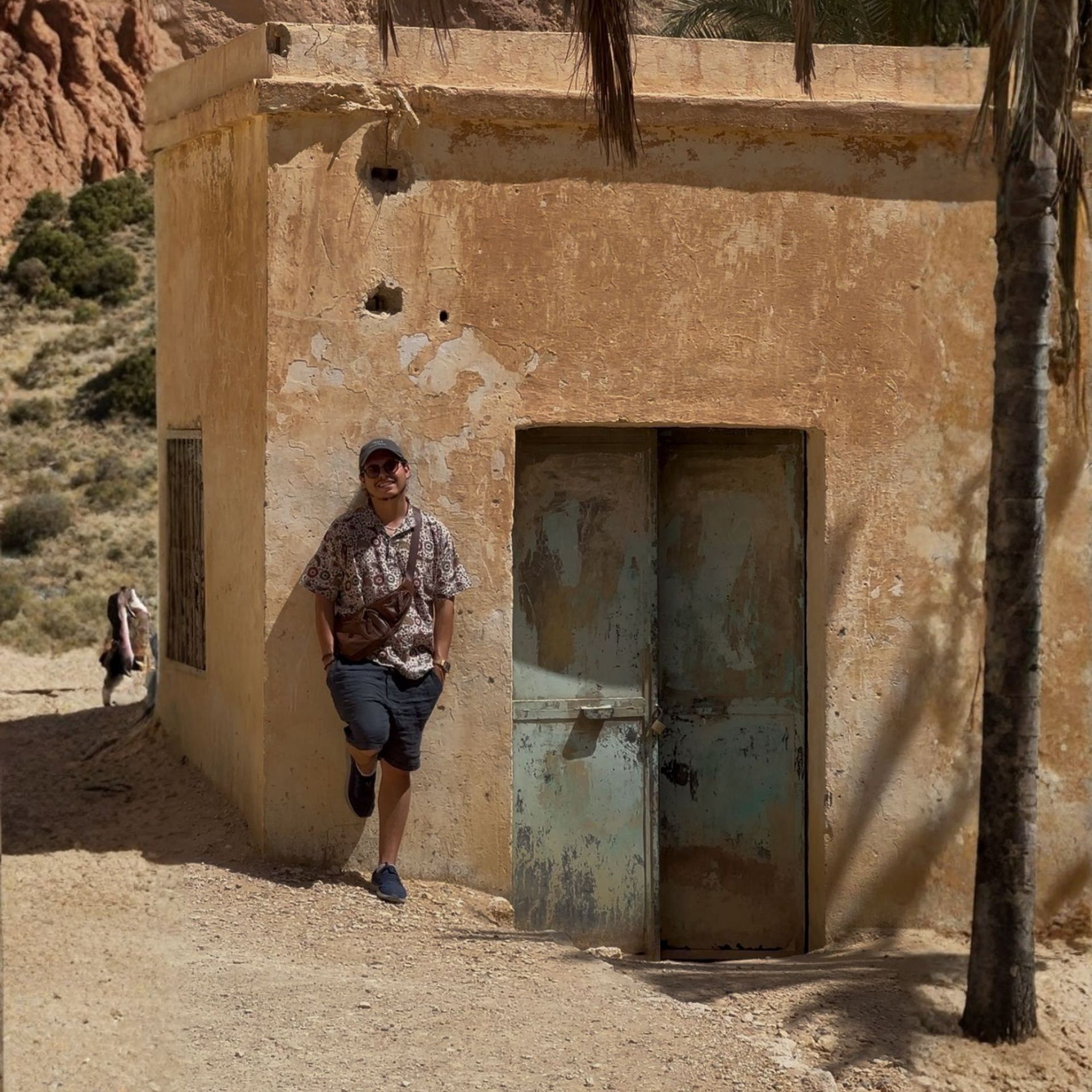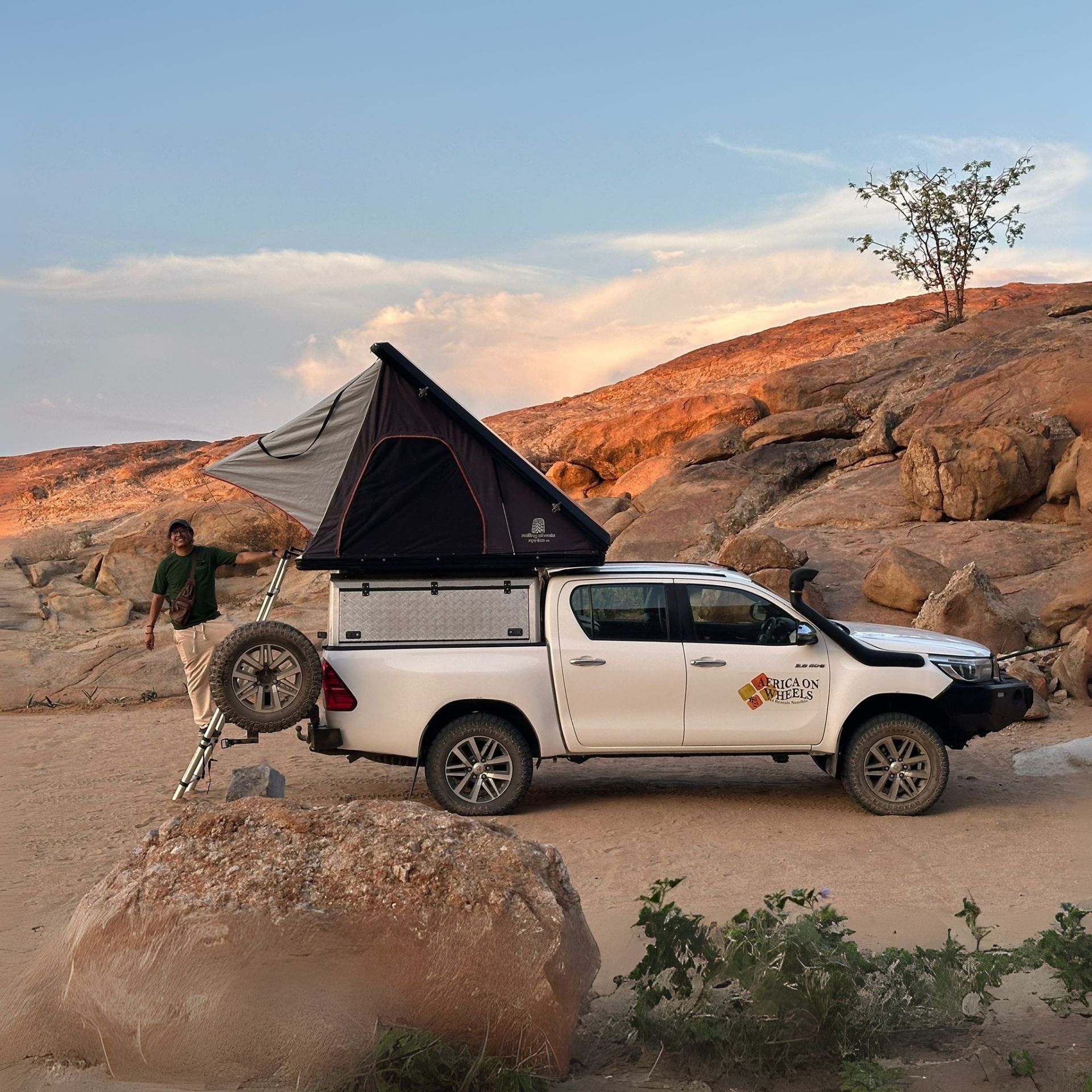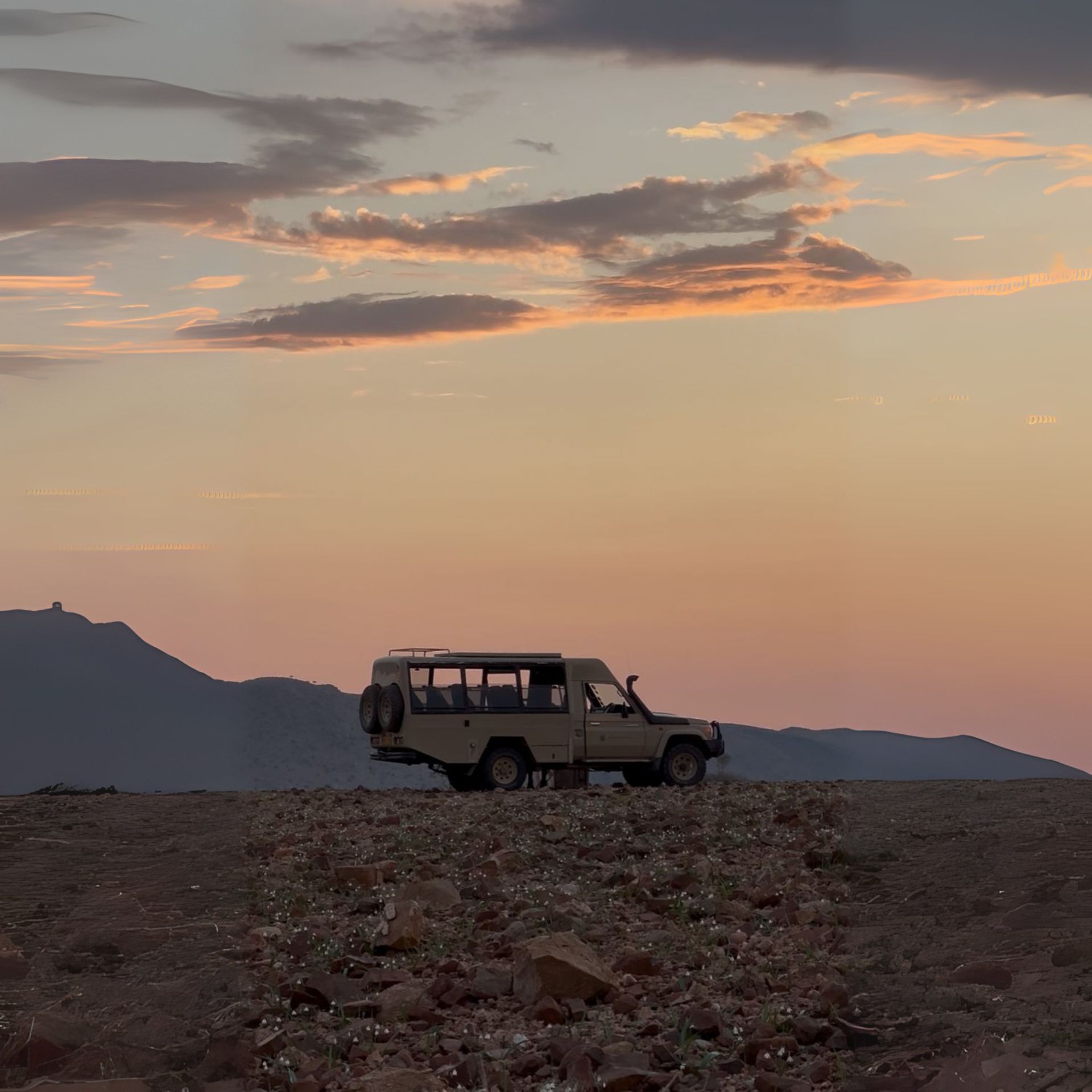Explore Kenya’s best safari destinations with my ultimate guide. Tsavo, Amboseli or Masai Mara. Which one is the best?
Either you plan a safari in Kenya independently, or have a tour operator taking care of everything in the back, organizing your first safari is not easy at all. There are too many options to choose from, price categories that are on a first sight difficult to understand and a timetable you need to delicately plan in order to not spend hours and hours on the road.
I traveled to Kenya reporting on national parks and safari experiences, and was able to explore some of its safari parks. These are my thoughts on which safari experience in Kenya you should visit. A safari in Tsavo National Park, a safari in Amboseli National Park or a safari in Masai Mara Natural Reserve, which one is the best?
Read more: The ultimative guide for getting an e-SIM in Kenya
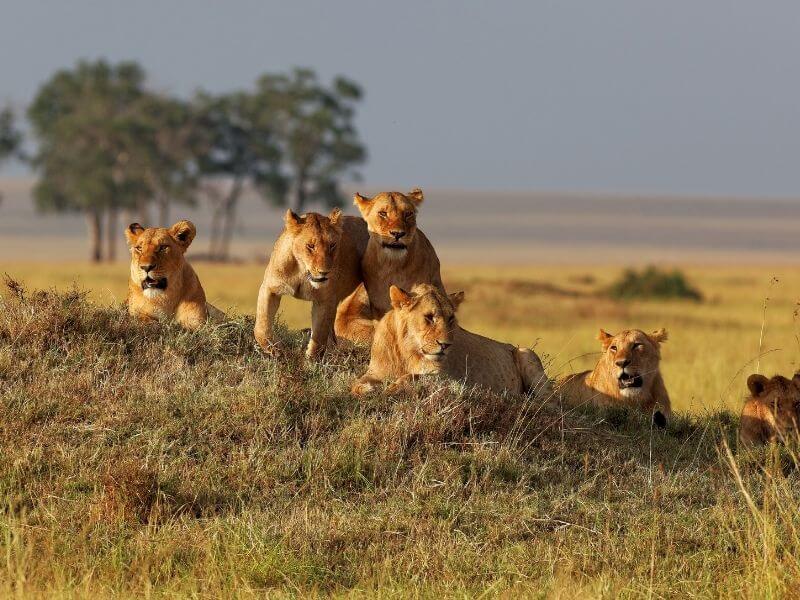
How to Plan the Perfect Safari in Kenya: Tips for First-Time Travelers
When it comes to plan a safari trip in Kenya, the first question to answer is mobility and flexibility. Unlike Europe or North America, where traveling from A to B is extremely simple and options are endless, transportation in Kenya does not work like that. Unless you have a very high budget and can afford traveling by private charter (around 200 – 300 EUR per flight), the only way to properly move around is by land.
Therefore, either you start your trip in Nairobi or Mombasa (Kenya’s two key cities), expect to drive for hours and hours in order to get to a national park or a natural reserve. For example, Masai Mara is located just 280km away from Nairobi. Still, you need about 6 hours to get there. The same goes from Nairobi to Amboseli, where its distance between is just 190km, but you need 4 hours to get there.
And while is possible to plan a 10 day trip and visit all three most important wildlife parks in Kenya, Masai Mara, Amboseli and Tsavo, take into consideration this would involve spending most of the time driving from one side to the other and wasting valuable time.
NOTE: a standard safari trip in Kenya would involve visiting two parks for 2-3 nights each. This will be enough time to get a good glimpse of the wildlife in Kenya and not get overwhelmed by the long and monotonous drives.
Read more: Which are the top safari experiences in Africa
Read more: Everything you need to know about the wildebeest migration

Best Time to Visit Kenya for a Safari
Kenya is a year-round safari destination, but your experience can vary depending on the time of year. The best time to visit for a safari generally falls between June and October, during the country’s dry season. These months are ideal for wildlife viewing as animals congregate around water sources and the vegetation is less dense, making it easier to spot Kenya’s famous wildlife, including the Big Five.
June to October: Prime Safari Season
The dry season, running from June to October, is widely considered the best time for safaris in Kenya. During this time:
- Weather: Expect clear skies and little to no rainfall. Daytime temperatures are pleasant, while nights can be cool.
- Wildlife: Animals are more concentrated near waterholes and rivers, increasing your chances of spotting diverse species.
- The Great Migration: The iconic Wildebeest Migration occurs from July to October in the Maasai Mara, as over a million wildebeest, zebras, and gazelles make their way across the plains from Tanzania’s Serengeti. This is one of the most dramatic and unforgettable wildlife spectacles on the planet.
- Crowds: While this is the peak season for safaris, particularly in Maasai Mara, the abundance of wildlife makes it worth navigating the increased visitor numbers.
November to May: Green Season and Rainy Periods
From November to May, Kenya experiences its wet season, divided into two periods: the short rains from November to December and the long rains from March to May. While not traditionally considered the best time for safaris, the rainy season does offer some unique advantages.
- Lush Landscapes: The rains transform Kenya’s landscapes into a green paradise, creating a striking backdrop for photography.
- Fewer Tourists: The parks are far less crowded, offering a more intimate experience.
- Birdwatching: This is the best time for birdwatching as migratory species arrive, creating a vibrant birding spectacle.
- Newborn Wildlife: Many animals give birth during the wet season, so you may have the chance to witness playful cubs and calves.
- Challenges: However, heavy rains can make some roads impassable, and the thick vegetation can make spotting animals more difficult. Some lodges may also close due to the weather.
Best Time Based on Parks and Activities
- Maasai Mara: Visit between July and October for the Great Migration.
- Amboseli: The dry season (June to October) offers stunning views of elephants against the backdrop of Mount Kilimanjaro.
- Samburu: Excellent wildlife viewing year-round, though the dry months are best for spotting predators.
- Birdwatching: November to April is ideal for bird enthusiasts, as migratory birds arrive during the wet season.
Be connected at all times in Kenya.
I recommend an e-SIM with Airalo. With them, I bought a plan of 10 GB for my whole stay in the country.
Best Safari Parks in Kenya
On a first sight, Masai Mara seems to be the perfect place to go for a safari. It is the epicenter for the wildebeest migration within the months of August to October and it is worldwide known as one of the best national parks in the world.
However, expensive permits, availability in accommodation and long drives, should be factors to be considered before you book your trip.
Fortunately, Tsavo or Amboseli are offering great options for those with limited budget, time or a tight schedule.
Price comparison for a safari in Kenya
| National Park | Entry Price (per day) | Average Safari Price (3-4 days) | Inclusions for Safari Price |
|---|
| Masai Mara | – Resident: KES 1,000 (adults) / KES 200 (children) – Non-Resident: USD 80 (adults) / USD 45 (children) | USD 1,000 – USD 3,500 | Game drives, park entry fees, meals, lodging, transportation |
| Amboseli | – Resident: KES 860 (adults) / KES 215 (children) – Non-Resident: USD 60 (adults) / USD 35 (children) | USD 700 – USD 2,500 | Game drives, park entry fees, meals, lodging, transportation |
| Tsavo East & West | – Resident: KES 500 (adults) / KES 215 (children) – Non-Resident: USD 52 (adults) / USD 35 (children) | USD 600 – USD 2,000 | Game drives, park entry fees, meals, lodging, transportation |
INSIDE TIP: Located just 7 km away from Nairobi, the Nairobi National Park is a good place to visit only if you are planning to skip any other bigger National Parks in Kenya. The wildlife here is way less than anywhere else in the country and I would prefer to pay a bit more, extend one or two nights and visit Amboseli.
The easiest way to compare safari tours is with Safari Bookings. Here you can contact almost every operator in Africa and quote a price.
Open Safari Bookings and find the right safari for you.
Read more: How to plan the best safari in Masai Mara in Kenya
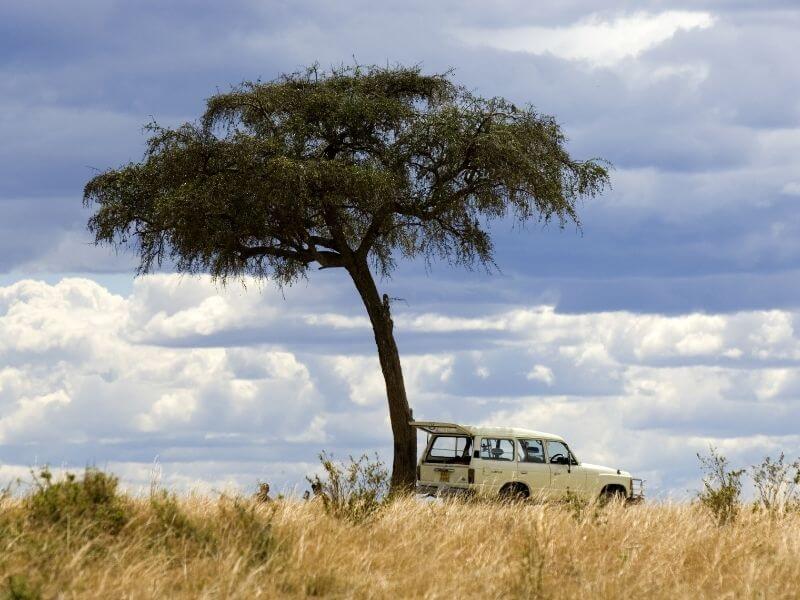
Why should you visit Masai Mara Natural Reserve?
- Famous for: The Great Migration (July to October), Big Five (lion, leopard, elephant, buffalo, rhino).
- Best time to visit: July to October (Great Migration), January to February.
- Location: Southwestern Kenya, near the Tanzanian border.
- Accessibility: 5-6 hour drive or 45-minute flight from Nairobi.
- Wildlife: Big cats (lions, cheetahs, leopards), large populations of wildebeest, zebra, giraffes, and elephants.
- Top experiences: Hot air balloon safaris, river crossings during migration, guided game drives.
Beside the wildebeest migration, Masai Mara is always great. It is the only park in Kenya where you can spot all big five in a single day and experience wildlife encounters that will simply leave you speechless.
It is one of the most beautiful safari spots in the world and even if you miss the migration, you will never leave disappointed.
On the other hand, Masai Mara’s entrance fees and overnight fees are the most expensive in Kenya. Expect to pay anything between 200-300 USD per day for a simple private tour and depending on the time of the year, reservations have to be done months in advance.
Still, for those looking to see the best of Kenya, Masai Mara is the option to go.
Check here tour operators to compare activities and find the best itinerary for you.
Read more: Everything you need to know in Masai Mara
Read more: How to plan a trip to Kenya and see the wilderbeest migration
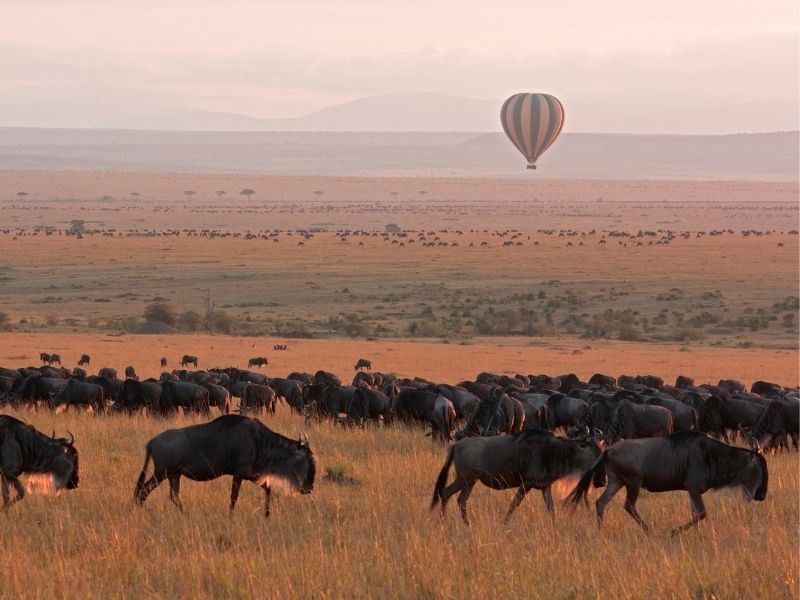
Why should you visit Amboseli National Park?
- Famous for: Views of Mount Kilimanjaro, large elephant herds.
- Best time to visit: June to October (dry season), January to February.
- Location: Southern Kenya, near the Tanzania border.
- Accessibility: 4-hour drive or 30-minute flight from Nairobi.
- Wildlife: Elephants, lions, cheetahs, buffalo, giraffes, and over 400 bird species.
- Top experiences: Elephant watching, views of Kilimanjaro, birdwatching, cultural visits with Maasai communities.
Located at the foothills of Mount Kilimanjaro, the landscapes in Amboseli are magical. Elephants roaming freely in groups of 20 or 30, and thousands of flamingo flying around and dancing in the air. Additionally, to its smaller size and closer distance to Nairobi, Amboseli has become this quick getaway from the city and an easy place to explore wild Kenya in a limited time.
With lower prices, great road conditions connecting the park and extraordinary wildlife, Amboseli is never a miss.
However, wildlife in Amboseli is way less than in Masai Mara. Big cats are more difficult to spot and leopards have not been seen in decades around this area.
Compare here the best safari tours in Amboseli
Read more: Everything you need to know about Amboseli National Park

Why should you visit Tsavo National Park?
- Famous for: Vast wilderness, Red Elephants, diverse landscapes.
- Best time to visit: June to October (dry season), January to February.
- Location: Southeastern Kenya, between Nairobi and Mombasa.
- Accessibility: 4-5 hour drive from Nairobi or 1-hour flight.
- Wildlife: Red elephants, lions, leopards, rhinos, crocodiles, hippos, and bird species.
- Top experiences: Mzima Springs in Tsavo West, Mudanda Rock in Tsavo East, exploring the Shetani Lava Flow, birdwatching.
Tsavo seems to be the perfect introduction for a safari in Kenya. It is the largest national park from all three in this article, and due to its location, the logistics of planning a trip to Tsavo are the simplest in whole Kenya.
Great signalization and easy access makes Tsavo a good place for a self-driving safari and since it is the least popular park from all three, you won’t be surrounded by a dozen cars when you spot a lion or a big elephant.
On the other hand, many think Tsavo is not as special as Masai Mara and Amboseli. The spotting of wildlife is way more difficult due to its massive size and large vegetation. Also, travelers can unfortunately spend a full weekend here without spotting a big cat.
Compare here the best safari tours in Tsavo National Park
Read more: Tips for planning your first safari

Kenya Safari Costs: Budget Breakdown for Lodges, Tours, and Wildlife Safaris
Kenya offers a wide range of safari experiences, from budget to luxury. Here’s a comprehensive breakdown of what you can expect to spend on your trip, including accommodation, tours, park fees, and transportation.
Accommodation Costs
Kenya has a wide range of safari lodges, camps, and hotels catering to different budgets. Whether you’re looking for luxury or simplicity, here’s what to expect:
- Luxury Lodges ($400 – $1,200 per night): High-end options such as Angama Mara or Elewana Sand River Mara include premium services, guided tours, gourmet meals, and private game drives. These lodges are often located within prime areas of national parks.
- Mid-Range Lodges & Camps ($150 – $400 per night): This tier includes comfortable, more affordable lodges like Ashnil Mara Camp or Sopa Lodges, offering great service, guided tours, and good access to wildlife areas without the luxury price tag.
- Budget Campsites & Lodges ($50 – $150 per night): Affordable options like Enchoro Wildlife Camp or Mara Explorers Camp provide basic amenities. These camps are great for budget travelers or backpackers seeking a closer-to-nature experience while saving on costs.
Safari Tours & Packages
The cost of a Kenya safari can vary significantly depending on the type of tour, the number of days, and the level of service:
- Luxury Safari Tours ($500 – $1,500+ per day): This price includes private game drives, all-inclusive lodges, professional guides, and possibly a private vehicle. Helicopter tours, hot air balloon rides, and other unique experiences are usually available at additional costs.
- Mid-Range Safari Tours ($200 – $500 per day): These packages typically include accommodation, meals, and group game drives. Popular tours from companies like Gamewatchers Safaris or Basecamp Explorer offer a great balance of comfort and cost.
- Budget Safaris ($100 – $200 per day): A budget safari usually involves staying at basic campsites or guesthouses and sharing vehicles on game drives. Companies like Kiboko Adventures offer affordable tours for travelers who want a genuine safari experience on a tight budget.
Kenya National Park Entry Fees in 2025
Park fees vary by location and duration. These fees are used for wildlife conservation and maintaining park infrastructure.
Maasai Mara National Reserve (Managed by Narok County Government)
- Jan 1 – June 30, 2025:
- USD $100 per adult per day
- USD $50 per child (3–11 years) per day
- July 1 – Dec 31, 2025(Peak season):
- USD $200 per adult per day
- USD $50 per child per day
Amboseli National Park
- USD $100 per adult per day
- USD $50 per child per day
Tsavo East & Tsavo West National Parks
- USD $100 per adult per day (each park individually)
- USD $50 per child per day
Lake Nakuru National Park
- USD $100 per adult per day
- USD $50 per child per day
These fees are payable in US dollars and sometimes Kenyan shillings (KES) at park entrances. Multi-day visits to parks often include the fees in the package price, so check with your tour operator in advance.
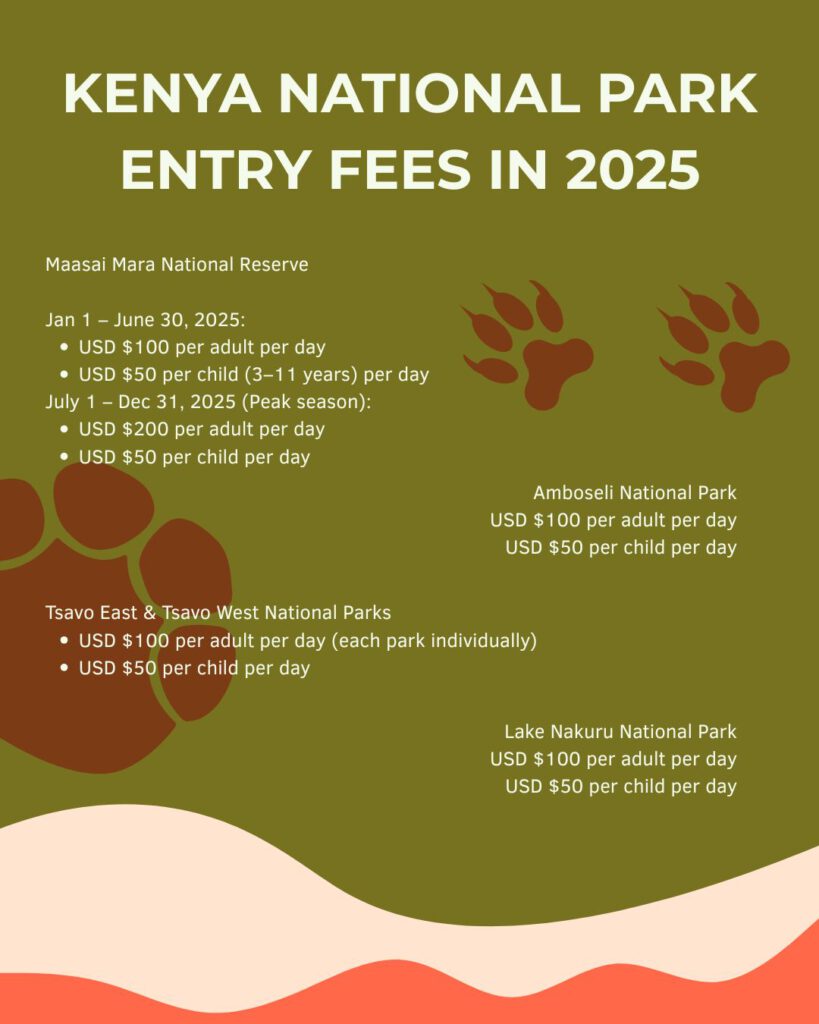
Keep in mind:
Residents and citizens have lower rates – check with KWS or your local tour operator for those.
Fees do not include accommodation or vehicle charges.
Entry is usually valid for 24 hours, depending on your gate of entry.
Transport Costs
Getting around Kenya for a safari can involve flights, road trips, or a combination of both.
- Domestic Flights: Many visitors fly into safari destinations to save time. Flights from Nairobi to Maasai Mara cost around $150 – $250 one way, while flights to Amboseli or Samburu range from $120 – $200 one way. Airlines such as Safarilink and Air Kenya offer regular services to the major parks.
- Safari Vehicle Hire: A full-day vehicle hire with a professional guide can range from $200 to $400 per day, depending on the type of vehicle and level of service. This includes fuel and park entry fees for the vehicle.
- Self-Drive Safaris: Kenya allows self-drive safaris in most parks. Car rentals typically cost $50 – $120 per day, with the option to rent 4x4s for more rugged terrain. However, hiring a guide for navigation and spotting wildlife is highly recommended for the best experience.
Additional Costs
- Hot Air Balloon Safaris: This bucket-list activity is popular in the Maasai Mara and costs around $400 – $500 per person, including a champagne breakfast after landing.
- Tipping: Guides and drivers typically expect tips, especially in mid-range and luxury tours. Budget about $10 – $15 per day for drivers and $5 – $10 for lodge staff per night.
Total Safari Budget
A Kenya safari can vary dramatically based on your style of travel and choice of activities:
- Luxury Safari: $1,000 – $2,000+ per person per day.
- Mid-Range Safari: $300 – $700 per person per day.
- Budget Safari: $100 – $200 per person per day.
Planning ahead and booking during off-peak seasons (April to June) can help you save on accommodation and tours. However, always be sure to research thoroughly to ensure you get the best experience for your budget.
When planning your Kenya safari, be clear about your budget and priorities. With a range of accommodation options, transportation methods, and safari packages, there’s something for every traveler—from luxury seekers to backpackers. By understanding the costs ahead of time, you can create an unforgettable safari experience without any financial surprises.
Safari in Kenya vs Safari in Tanzania
Combining Serengeti National Park and Masai Mara on the same trip seems to be the most reasonable choice when it comes to planning a safari. They are not only the center for wildlife experiences in the world, but they are also located right next to each other.
And its true. Visiting both parks on the same trip is an experience of a lifetime and something only few people can do. However, before you back your bags and book a lodge, take into consideration the logistical challenge that visiting Masai Mara and Serengeti on the same trip is.
First of all, Masai Mara is located in Kenya, while Serengeti is located in Tanzania. Beside the visa costs and border crossing, there are no direct connections from Masai Mara to Serengeti. You will have to drive back to Nairobi, from there go to Arusha and once in Arusha take a transfer to Serengeti – something you need to plan at least 2-3 days in doing.
Additionally, while Serengeti is one of the most extraordinary safari parks in the world, it is also one of the most expensive. A day in Serengeti starts at 300 USD per person, while a day in Amboseli can get as low as 100 USD per person.
Combining Serengeti with a trip to Kenya as doable, it just requires a bigger planning from your side.
Kenya’s Maasai Mara vs. Tanzania’s Serengeti on a Nutshell
- Size: The Serengeti covers about 30,000 sq km (12,000 sq mi), making it significantly larger than Kenya’s Maasai Mara at 1,510 sq km (583 sq mi).
- Wildebeest Migration: Both parks are part of the Great Migration. In the Maasai Mara, the migration is usually seen from July to October, while in the Serengeti, it peaks from June to July (north) and January to March (south).
- Wildlife Density: The Maasai Mara is known for its higher density of big cats, especially lions, while the Serengeti offers a more remote, less crowded safari experience.
- Crowds: Maasai Mara is more accessible and sees higher numbers of tourists, especially during the migration, while the Serengeti’s vastness allows for more solitude.
- Accessibility: Maasai Mara is easier to reach with domestic flights or a 6-hour drive from Nairobi. The Serengeti requires a flight from Arusha or a longer drive.
- Park Fees: Maasai Mara entry fees are typically $80 per adult per day, while the Serengeti charges about $70 per adult per day.
My top recommendation is to choose two out of the three national parks.
Open Safari Bookings and compare different safari prices.
Read more: How to plan a trip to Serengeti National Park
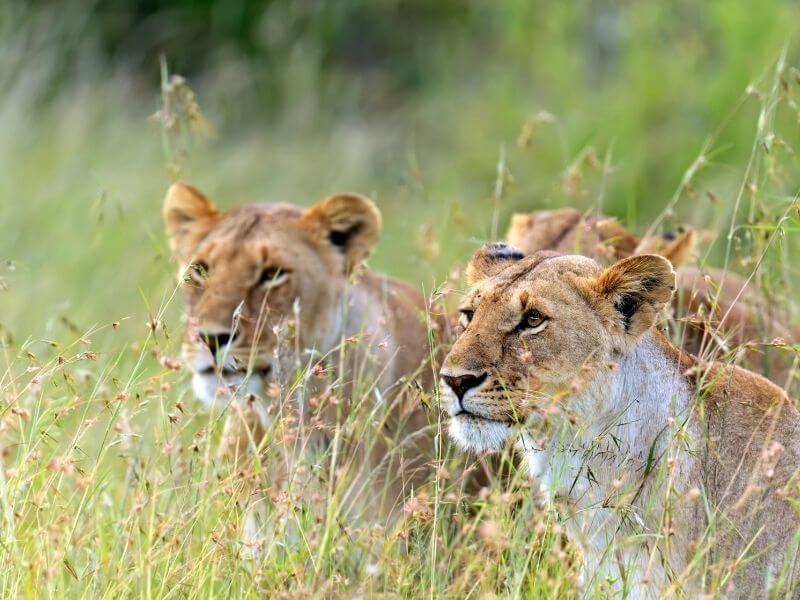
Planning a trip to Kenya independently is fun. However, if you want to arrange everything with tour operators beforehand from the comfort of your home. SafariBookings is the best platform for it.
They have the largest database of tour operators in Africa and you can simply send a request and negotiate a tour and a price directly with the operator. You don’t have to pay any additional fees.
These are some of the most popular tours in Kenya at SafariBookings
Read more: How To Plan A Safari Trip On A Budget
Internet connection across East Africa
What is the best e-SIM for traveling in East Africa
When it comes to traveling in Africa, having a good internet connection all the time is essential.
When traveling, I started using e-SIMs from Flexiroam or Airalo. I love these two companies, and when crossing the border between Tanzania and Kenya, I recommend getting a Global Plan from Flexiroam and activating it when crossing. Once settled in, I prefer to get a local physical SIM to save some costs. However, Flexiroam has been a lifesaver.
Be connected at all times in Kenya.
I recommend an e-SIM with Airalo. With them, I bought a plan of 10 GB for my whole stay in the country.

